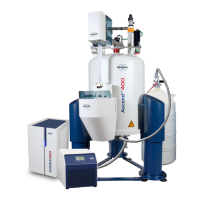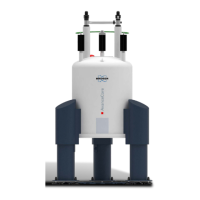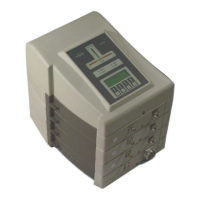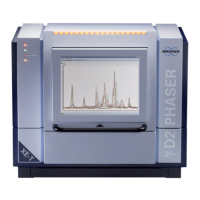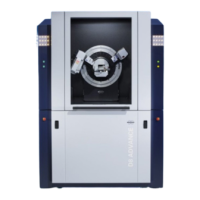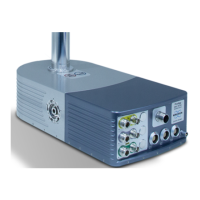Magnet Safety
26 / 48 H171764_6_001
4.3.6 Protective Clothing
Protective clothing rules include, but are not limited to:
• Protective clothing must be worn mainly to avoid cold burns. Therefore dry leather or
cryogenic gloves must be worn when handling or working with cryogenic liquids.
• Gloves must be loose fitting so that they can be removed easily in case of liquid spillage.
• Goggles must be worn to protect the eyes.
• Any metallic objects (e.g. jewelry) should not be worn on those parts of the body, which
may come into contact with the liquid.
4.3.7 Other Safety Rules
Other rules of handling cryogens include, but are not limited to:
• Handle the liquids carefully at all times. Boiling and splashing will always occur when filling
a warm container.
• Beware of liquid splashing and rapid flash off of cryogens when immersing equipment at
ambient temperature into the liquid cryogens. This operation must be carried out very
slowly.
• When inserting open ended pipes into the liquid, never allow open ended pipes to point
directly towards any person.
• Use only metal or Teflon tubing connected by flexible metal or Teflon hose for transferring
liquid nitrogen. Use only gum rubber or Teflon tubing.
• Do not use Tygon
®
or plastic tubing. They may split or shatter when cooled by the liquid
flowing through it and could cause injury to personnel.
4.3.8 Smoking
Please obey the following basic rules concerning smoking:
• Do not smoke in any rooms in which cryogenic liquids are being handled.
• Designate all rooms in which cryogenic liquids are being handled as “No Smoking” areas,
using appropriate signs.
• While nitrogen and helium do not support combustion, their extreme cold dewar causes
oxygen from the air to condense on the dewar surfaces, which may increase the oxygen
concentration locally.
• There is a particular fire danger if the cold surfaces are covered with oil or grease, which
are combustible. Self-ignition could occur!
4.4 Liquid Nitrogen Refill
Please read this carefully and make it accessible to anybody working with the magnet
system.
• A shielded superconducting NMR Magnet System can be operated easily and safely
provided the correct procedures are obeyed and certain precautions observed.
• The recommendations in this section cannot cover every eventuality and if any doubt
arises during the operation of the system, the user is strongly advised to contact the
supplier.
